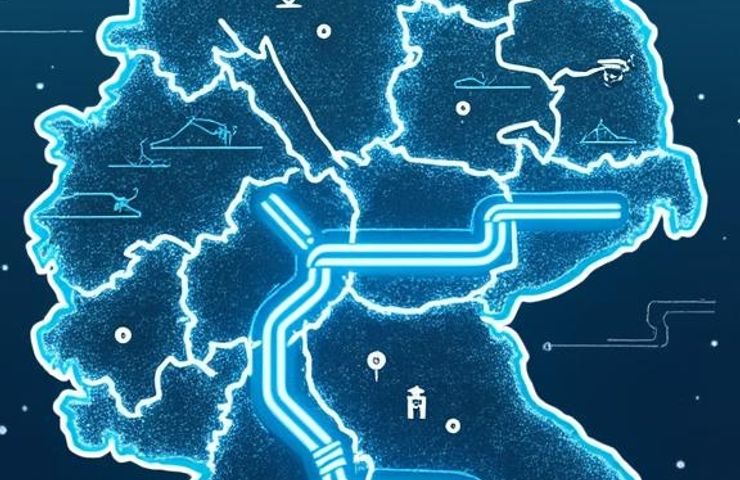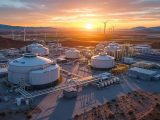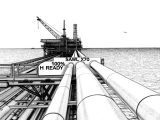
Germany Accelerates Hydrogen Infrastructure Rollout with National Pipeline Grid by 2025
August 7, 2025A Hydrogen Autobahn?
Picture this: Germany’s next autobahn isn’t packed with cars but buzzing with green hydrogen. That’s the bold vision after the Federal Network Agency (BNetzA) gave the nod to a nationwide hydrogen transmission pipeline grid. Kicking off in 2025, this backbone will connect wind and solar-powered hydrogen plants, heavy industry zones, storage depots and import terminals on a route stretching from Flensburg all the way down to Füssen. It’s a monumental step for the country’s hydrogen infrastructure dream.
Germany’s energy saga has already seen big shifts—nukes out by 2023, coal heading for the exit by the mid-2030s, and a massive surge in renewables under the Energiewende banner. Yet, electrifying everything can’t fully decarbonize sectors like steelmaking, chemicals or freight haulage. Enter hydrogen, buoyed by dedicated national plans and billions in funding (even if wallets have been pinched lately). It’s now center stage in the push toward sustainable energy.
Building the Core Grid
The green light covers roughly 9,040 km of pipeline and carries an eye-watering price tag close to €19 billion. To save both time and cash, much of it will be repurposed from the existing natural gas network. Pipes will be fitted with fresh seals and hydrogen-ready linings so leaks and embrittlement become a thing of the past. The plan is that by 2032 every one of Germany’s 16 federal states will tap into this grid—meaning both homegrown hydrogen production and large-scale imports can fuel factories, refineries and power plants alike.
Why the rush? Industry demand is projected at 95–130 TWh by 2030, but local green hydrogen output will only cover a slice of that. Experts reckon 50–70 percent of supply will have to roll in from abroad via coastal hubs before being piped inland. Since hydrogen is set to replace fossil feedstocks and fuels, a robust hydrogen infrastructure is vital to knit together a truly decarbonized supply chain.
Repurposing Legacy Systems
Turning old methane pipelines into hydrogen highways is no small feat. Operators must run detailed material checks, swap out vulnerable gaskets and seals, and fit ultra-sensitive leak detectors to keep tabs on hydrogen’s tiny molecules. Beyond the pipes themselves, the network will hook up with storage caverns and tanks that smooth out seasonal swings—so electrolyzers can crank away at full tilt when wind and sun are abundant, then pump excess gas into the grid.
Gasunie Deutschland, a heavyweight in gas transmission, is set to steer much of the engineering work. Its deep know-how in high-pressure logistics will be invaluable when it comes to tweaking compressor stations, stepping up pressure controls and rolling out smart monitoring systems. “We’re not just shuffling molecules—it’s about reinventing an entire energy puzzle for the zero-carbon era,” says a project engineer.
Policy Drivers and Economic Impacts
Behind this mega-project is a cocktail of climate ambition and economic sense. Robert Habeck, Federal Minister for Economic Affairs and Climate Action, hailed the approval as truly “transformative,” drawing parallels to the autobahn network that once wove Germany together. Under the watchful eye of the Federal Ministry for Economic Affairs and Climate Action (BMWK), the game plan is twofold: ramp up domestic electrolyzer capacity and lock in import deals with friendly producing nations.
On the political front, the Social Democratic Party of Germany (SPD) has hammered home “hydrogen readiness” in the tendering process for power plants—making sure new gas-fired units can flip to hydrogen as soon as supplies allow. These policy tweaks are designed to guard against supply hiccups and anchor long-term industrial decarbonization, assuming budgets stay intact.
Industry Reaction
The German Association of Energy and Water Industries (BDEW) cheered the regulatory go-ahead as a “cornerstone for industrial decarbonization.” But they’ve also sounded alarm bells: recent cuts to hydrogen and clean tech programs could slow things down and dent competitiveness. In their view, delays in electrolyzer auctions and funding gaps risk factories defaulting back to higher-emission workarounds—driving up costs and jeopardizing Germany’s green ambitions.
Tech at the Forefront
At the heart of it all are electrolysis plants, powered by wind, solar and other renewables. These units split water into hydrogen and oxygen, churning out virtually zero-emission gas. While Germany is scaling up its domestic hydrogen production, the grid’s design also assumes big imports—either as compressed gas or in the form of ammonia, underlining the birth of a global hydrogen market.
Over in power generation, the latest gas plants are being built with dual-fuel burners and safety systems calibrated for future hydrogen blends or even pure hydrogen operation. This phased approach lets operators keep things running today on methane while keeping an eye on tomorrow’s sustainable energy goals.
Challenges on the Horizon
No project this size sails smoothly. Permitting and coordination with 16 state regulators could throw up legal roadblocks. Technical standards for materials, compressors and safety protocols must be harmonized across regions—a real juggling act. And let’s not forget the bill: the nearly €19 billion price tag leans heavily on public subsidies and regulated tariffs, which depend on political will in an era of tight finances.
Then there’s the tricky bit of energy sovereignty. If up to 70 percent of green hydrogen has to be imported, Germany risks swapping one dependency for another—even if the gas is green. Locking in strategic partnerships with export countries will be key to keeping the taps open and prices steady for decades to come.
Broader Implications
Germany’s hydrogen grid isn’t just a domestic play; it could set the European benchmark. As Brussels finalizes its own hydrogen strategy, German rules, tech specs and business models might become the go-to template for a pan-hydrogen infrastructure—stretching from Iberia across the Alpine states to Eastern Europe. A truly interconnected network could slash costs, boost security and bring the zero-carbon future within reach.
Looking Forward
Come 2025, the first gushes of hydrogen will start flowing through the revamped pipelines—a moment that’ll mark a new chapter in Germany’s path to sustainable energy. Whether this ambitious timetable and budget hold will be the real test of Germany’s ability to marry policy, industry and innovation. If it all clicks, the country won’t just decarbonize its industrial heartland; it could lay the tracks for Europe’s hydrogen economy—and show the world how it’s done.



 With over 15 years of reporting hydrogen news, we are your premier source for the latest updates and insights in hydrogen and renewable energy.
With over 15 years of reporting hydrogen news, we are your premier source for the latest updates and insights in hydrogen and renewable energy.